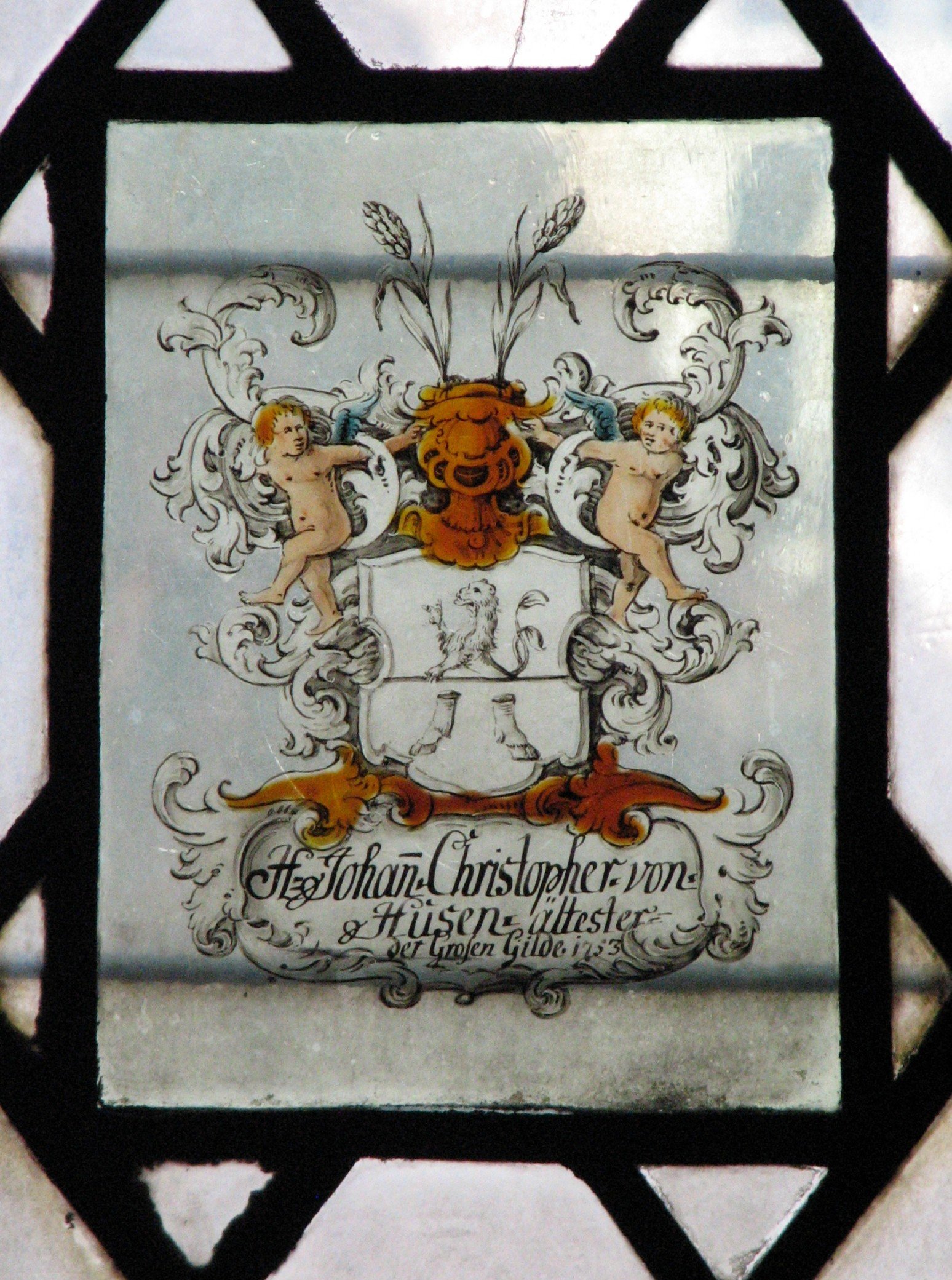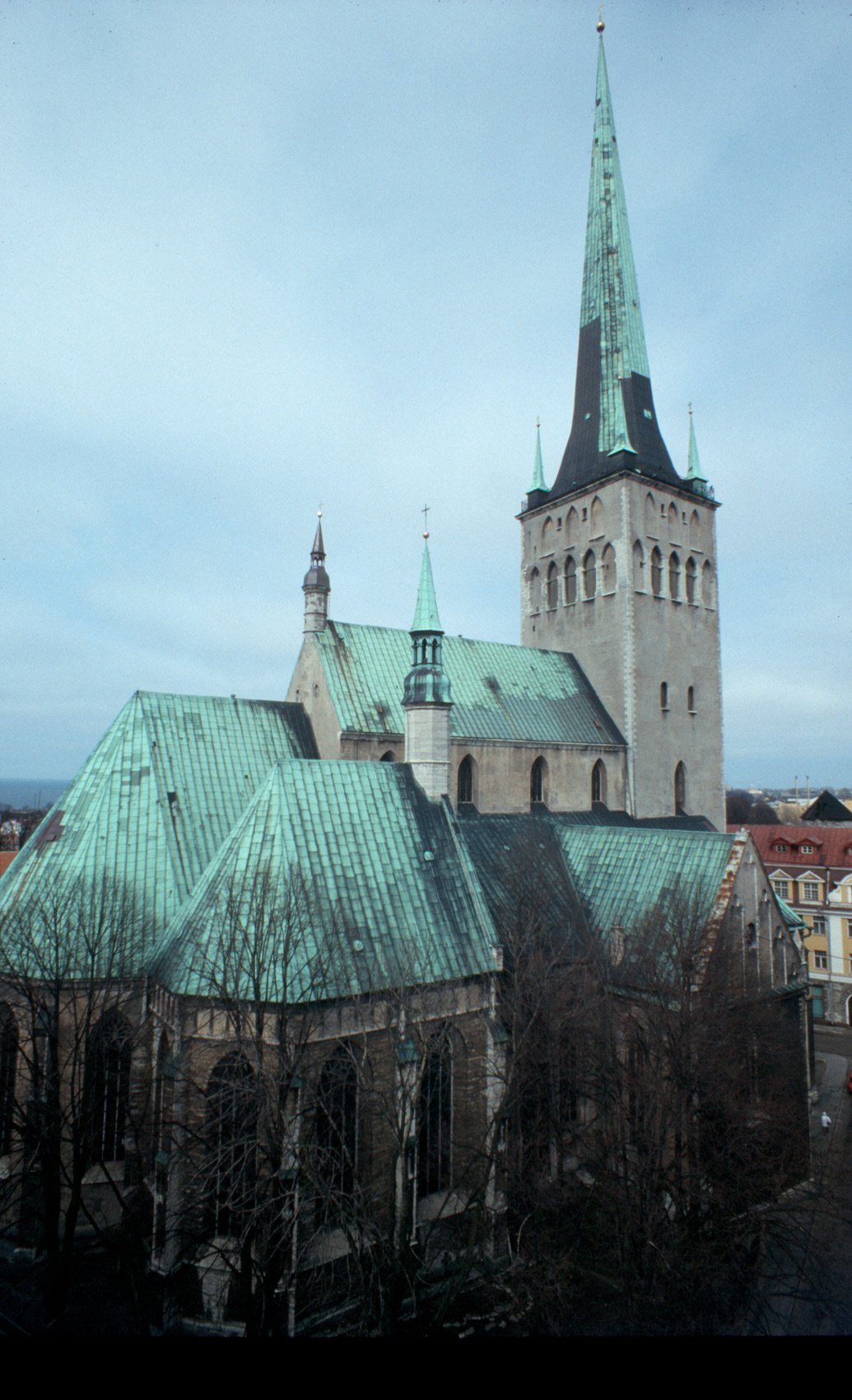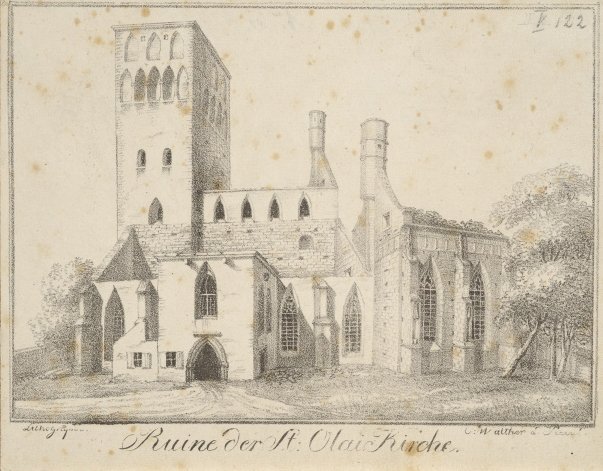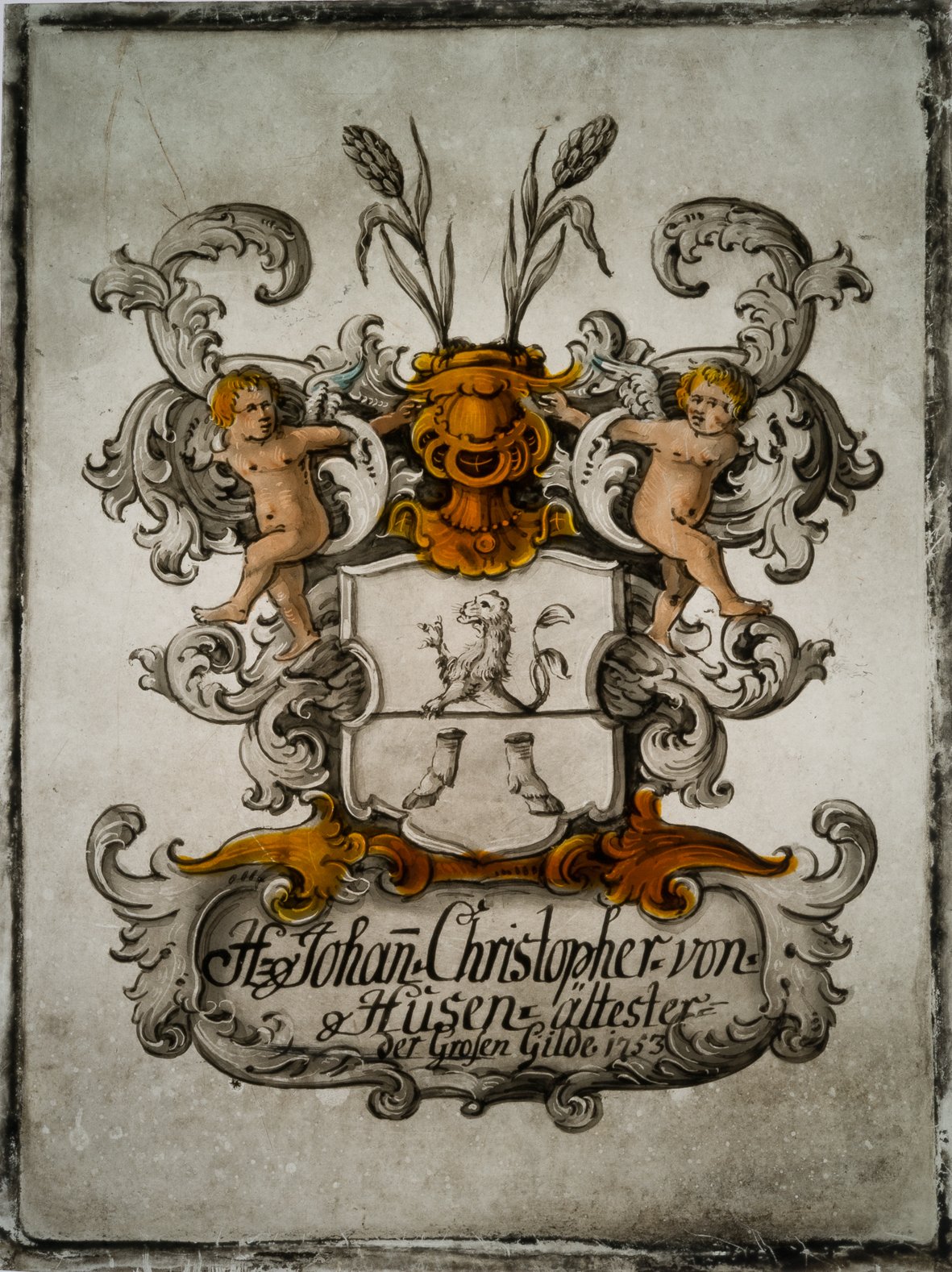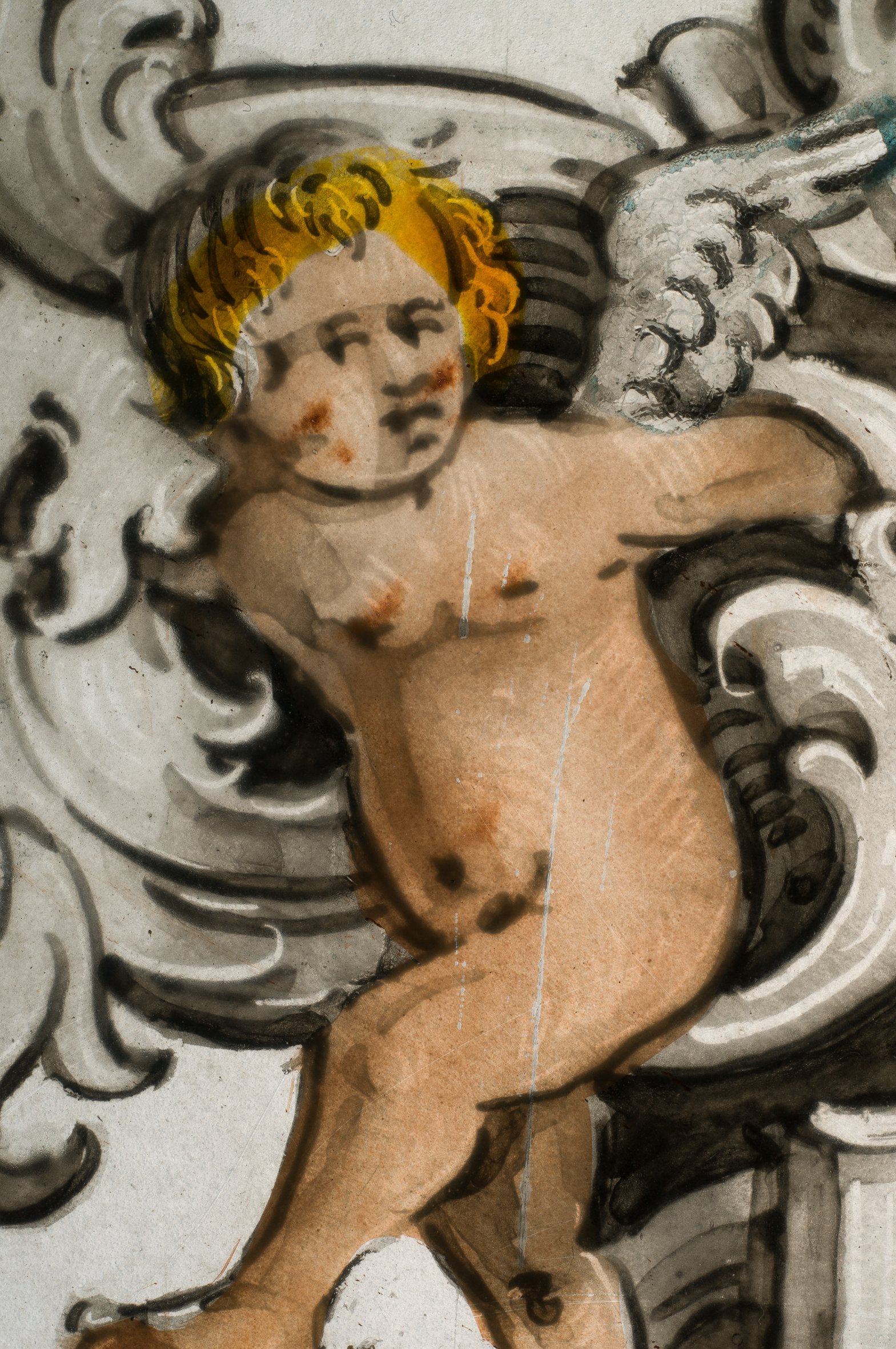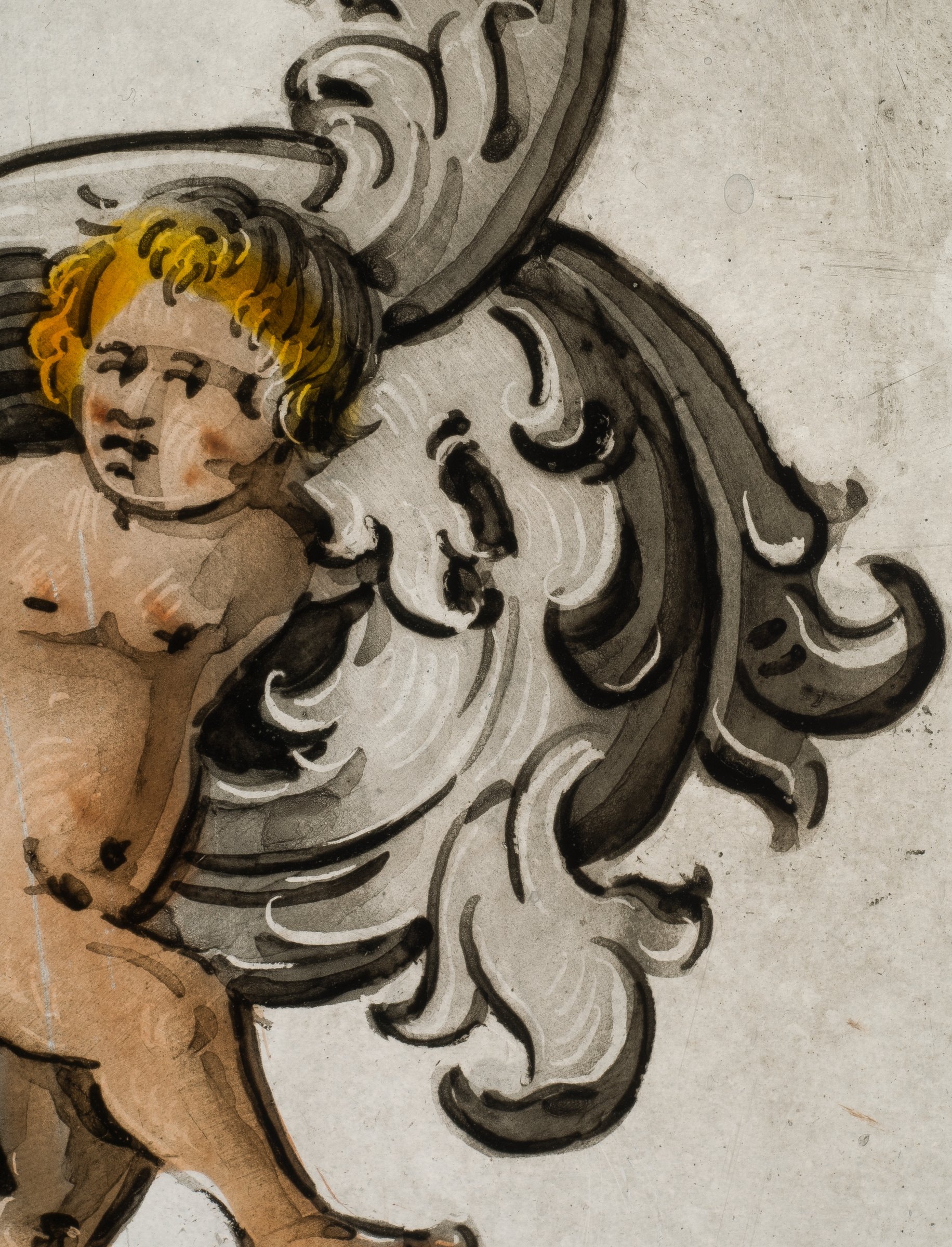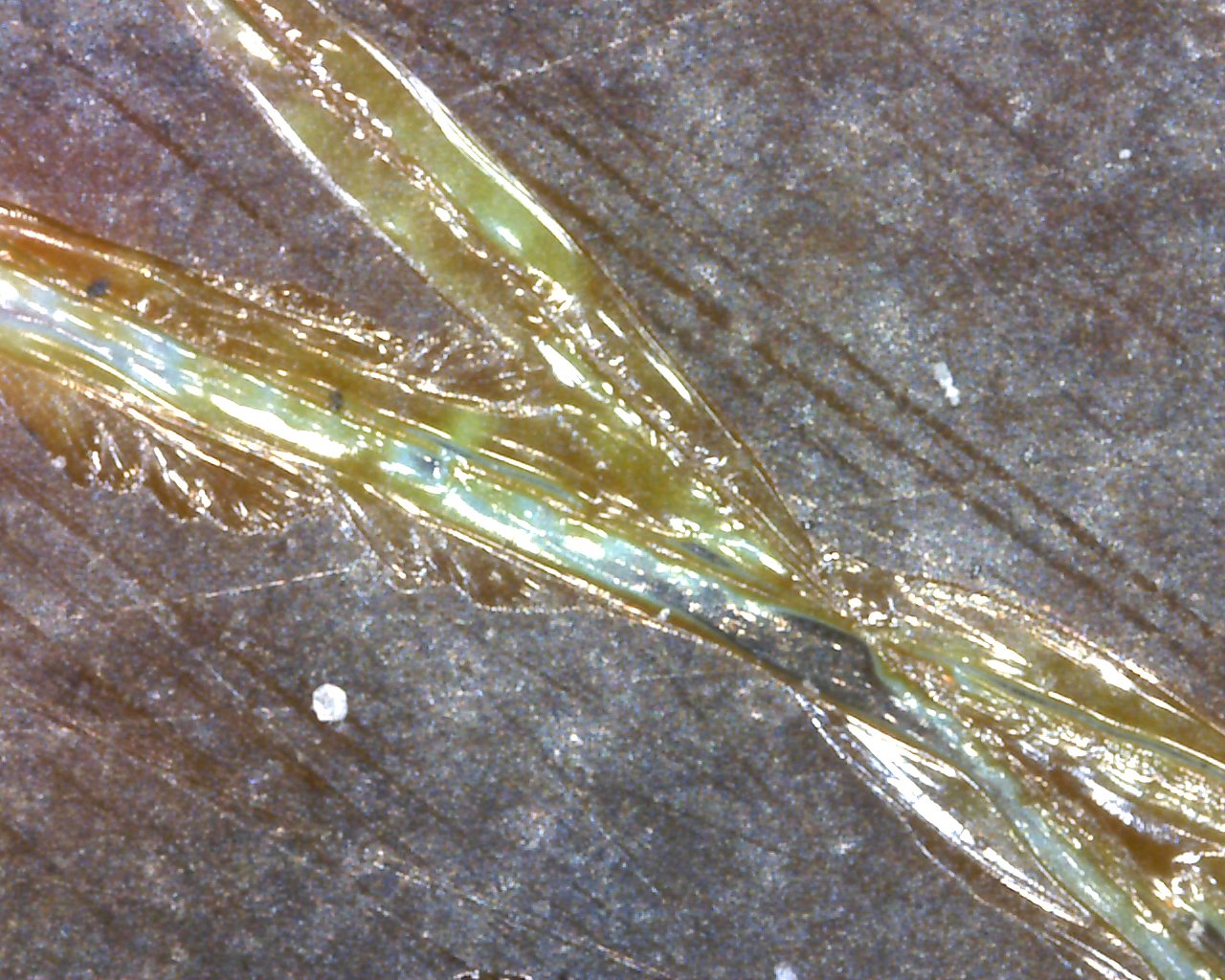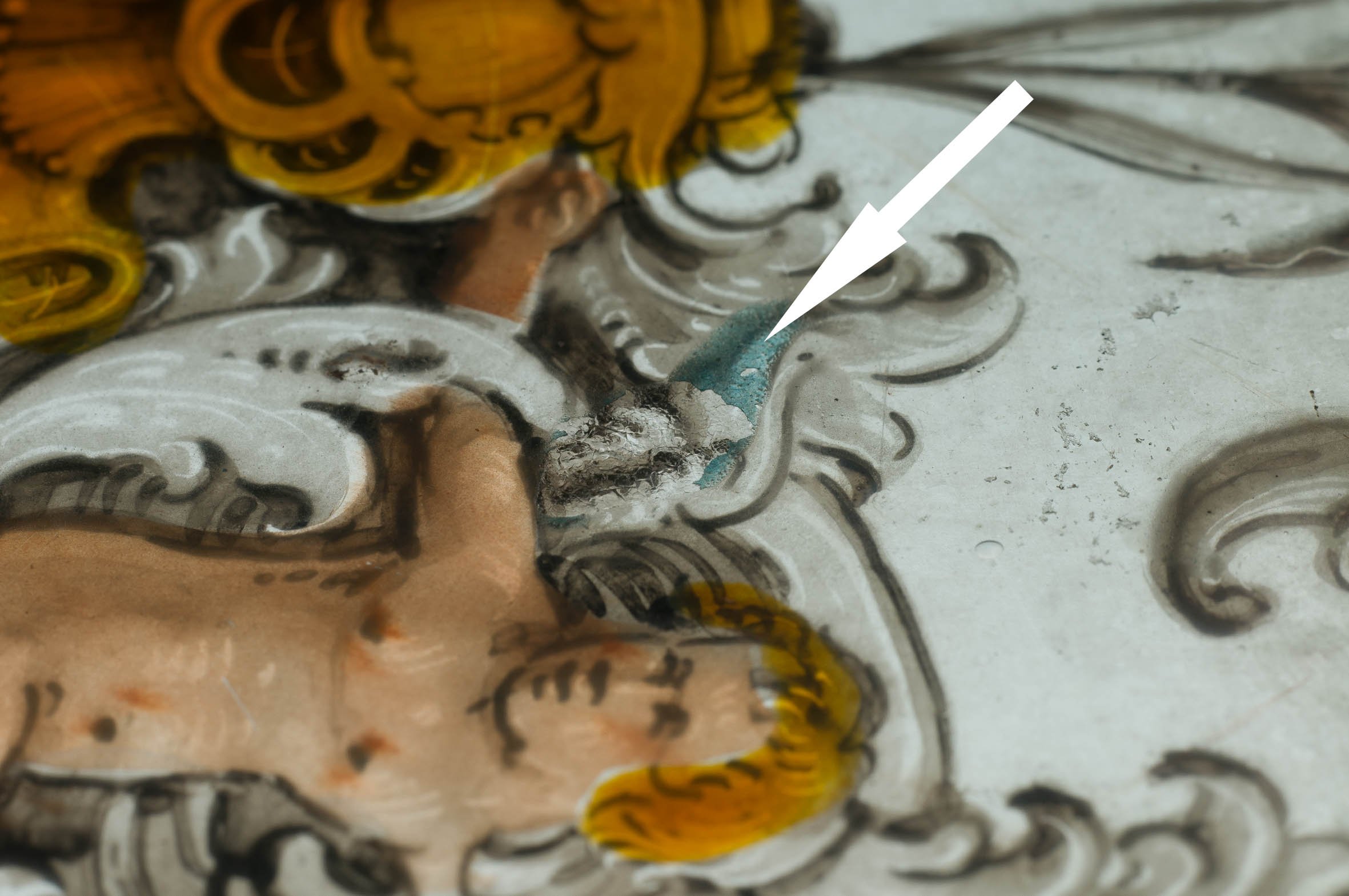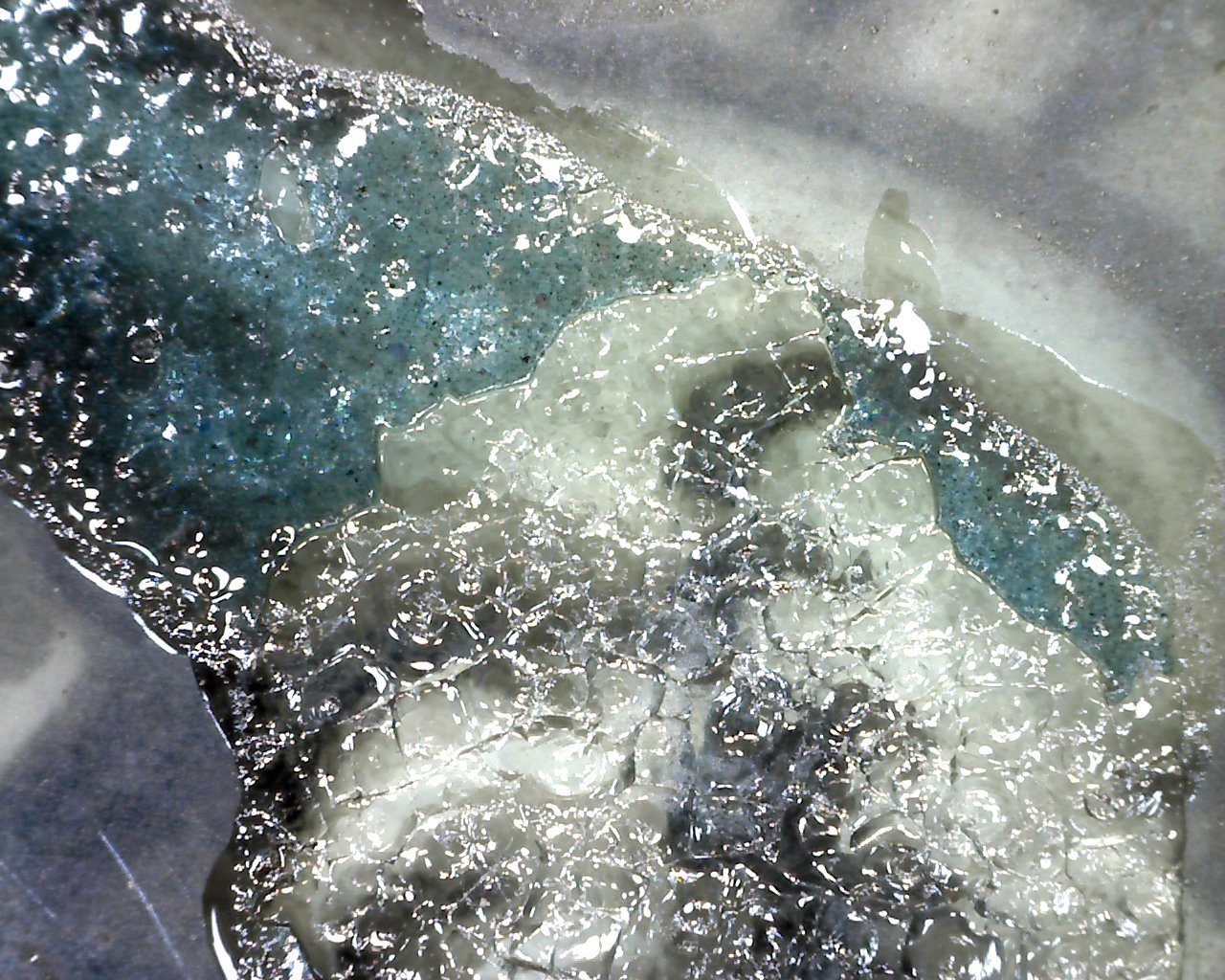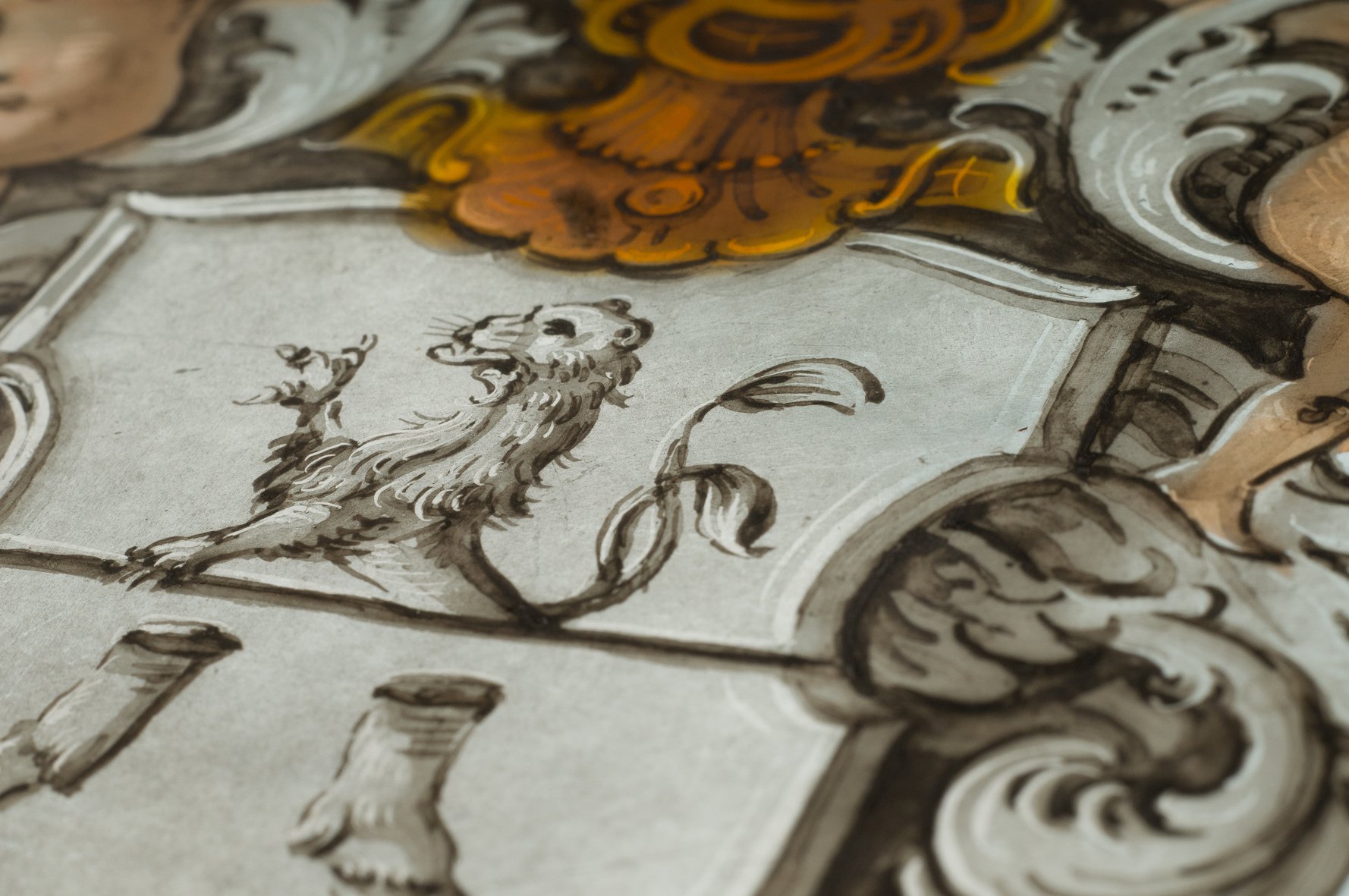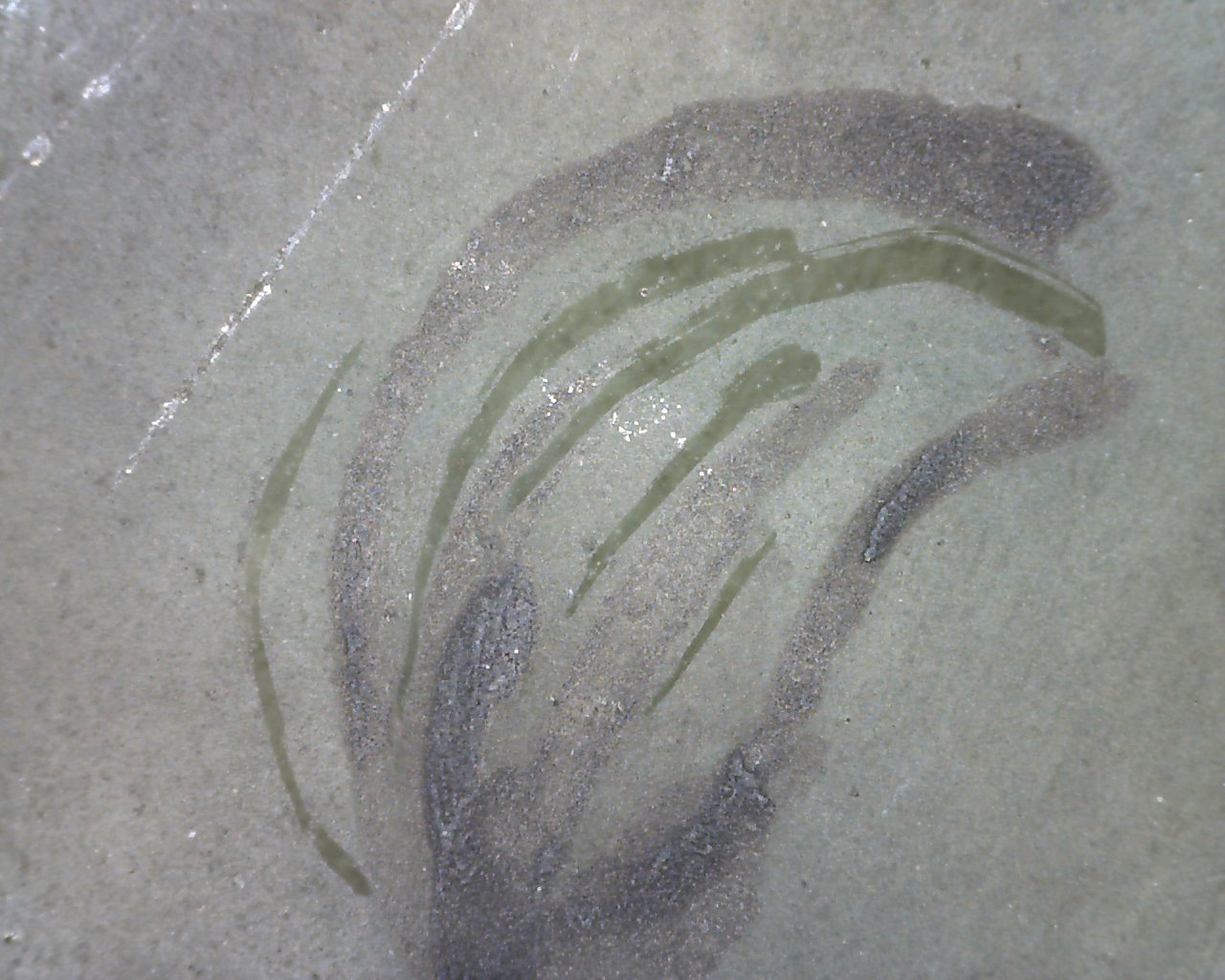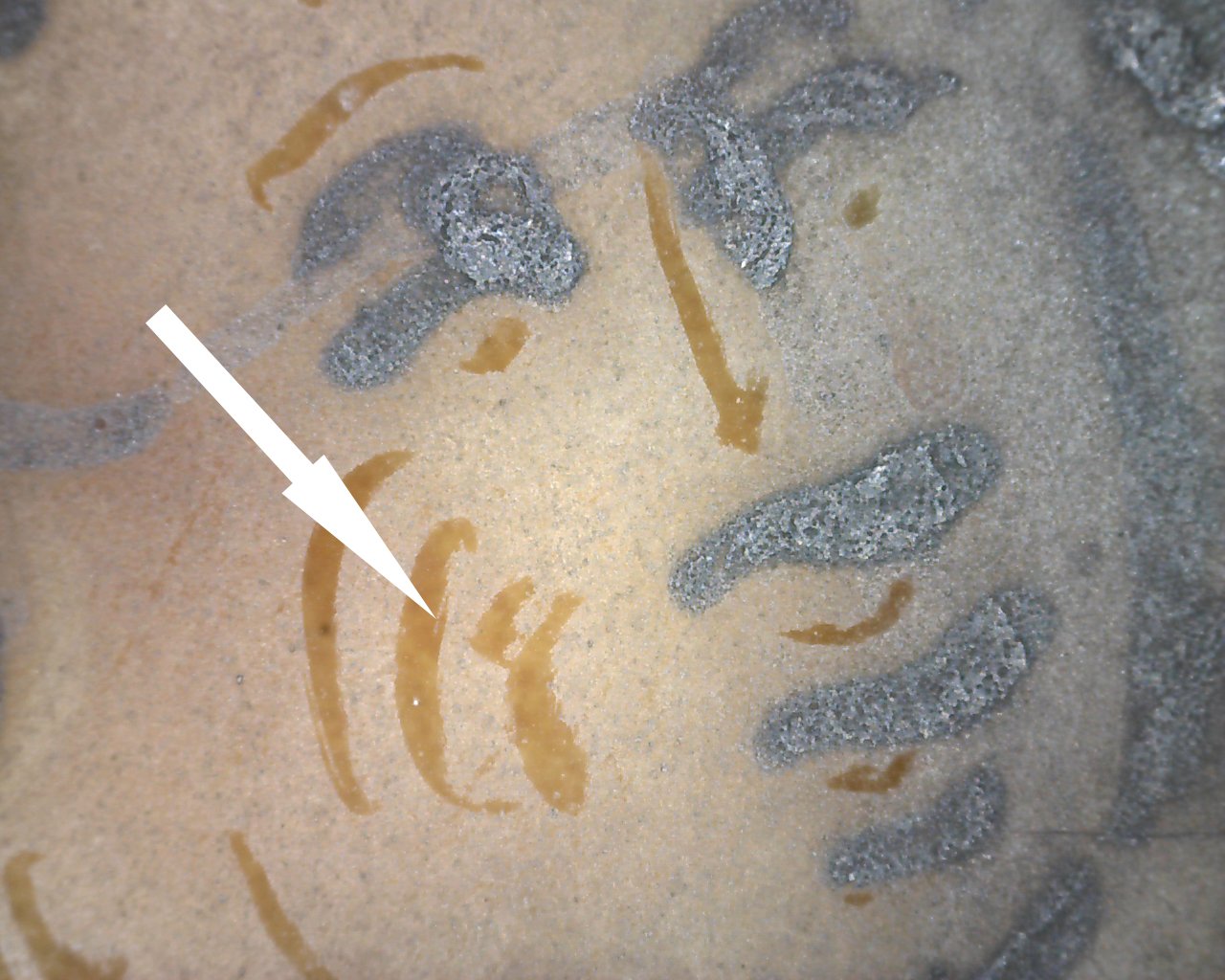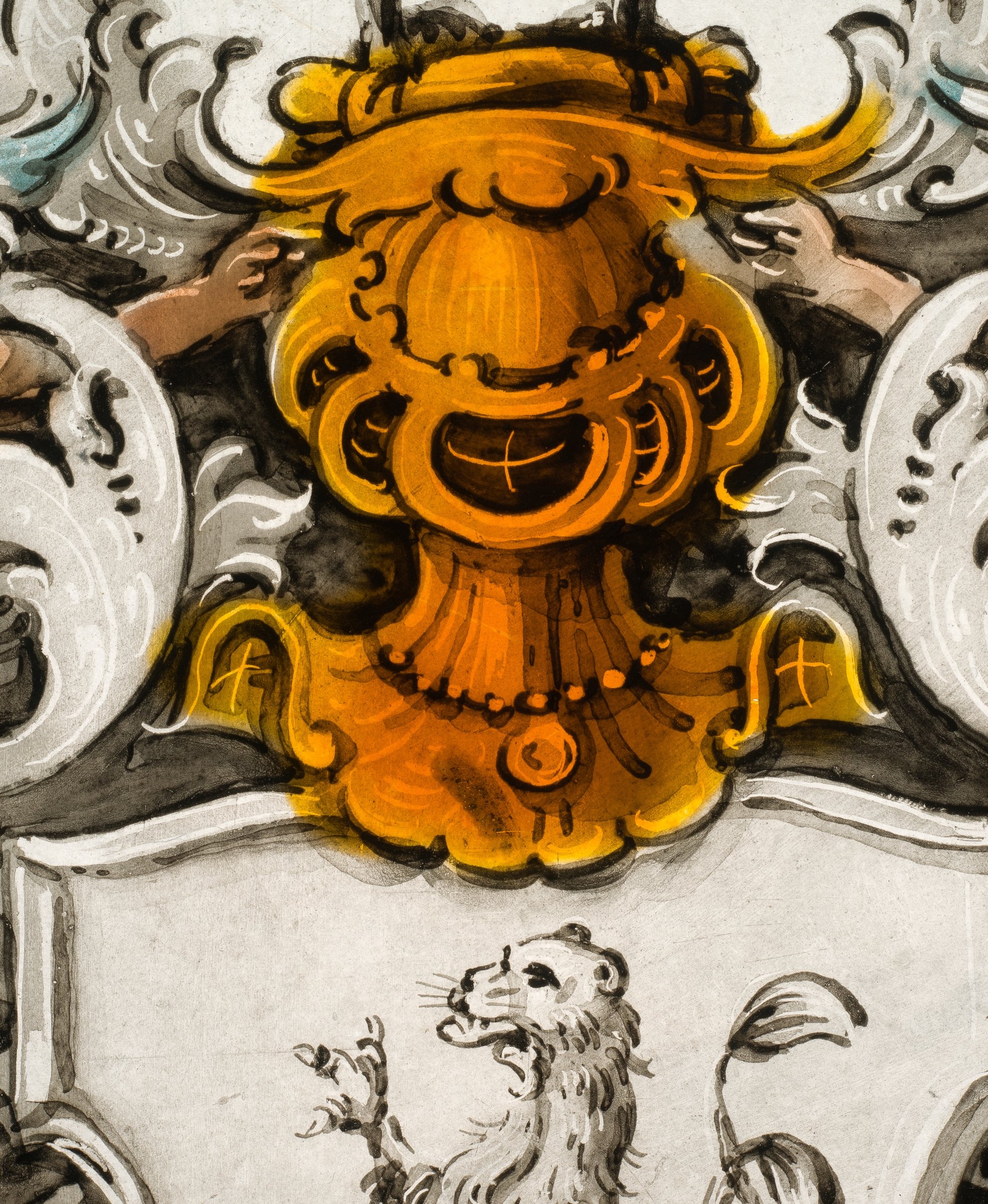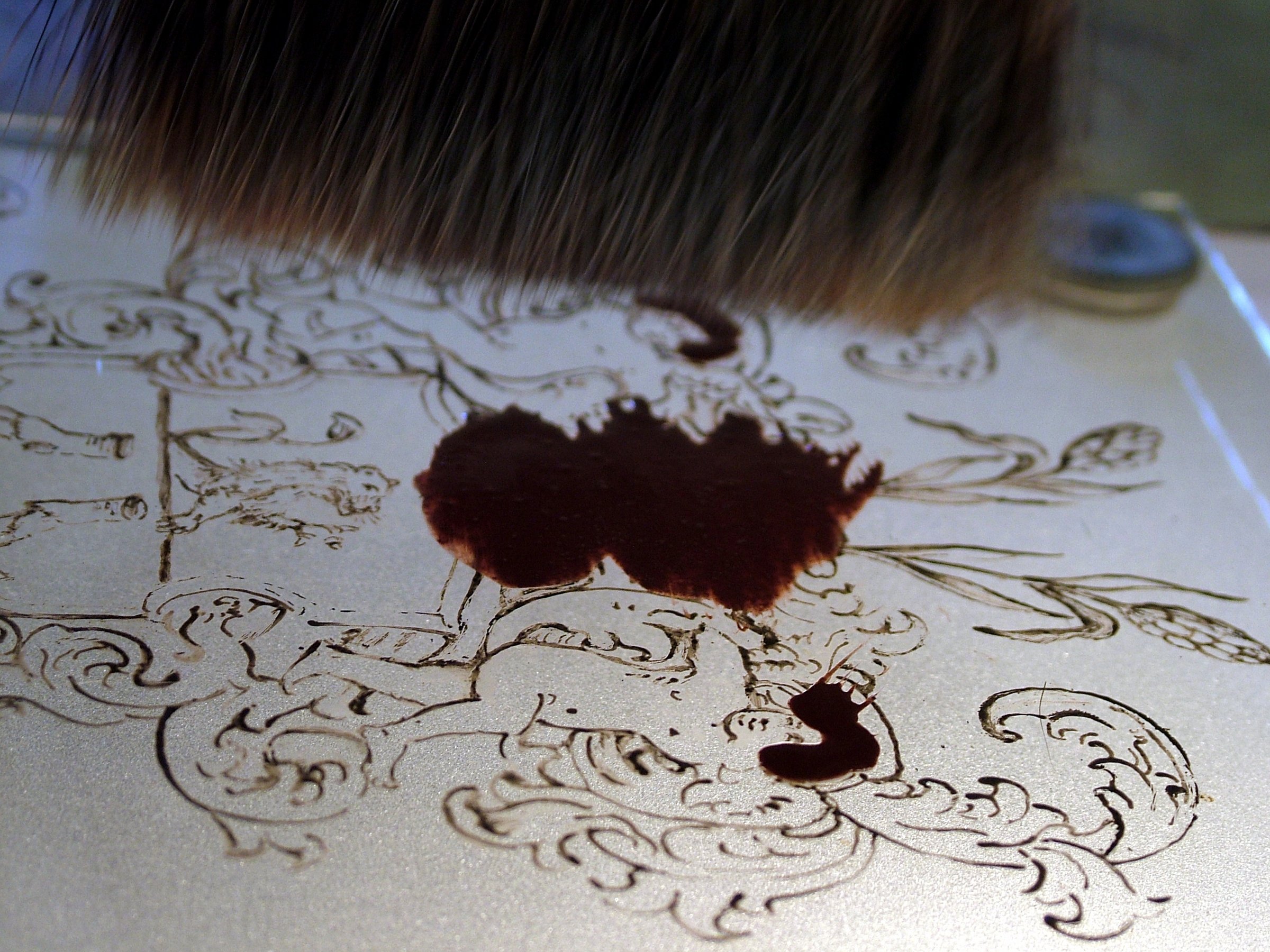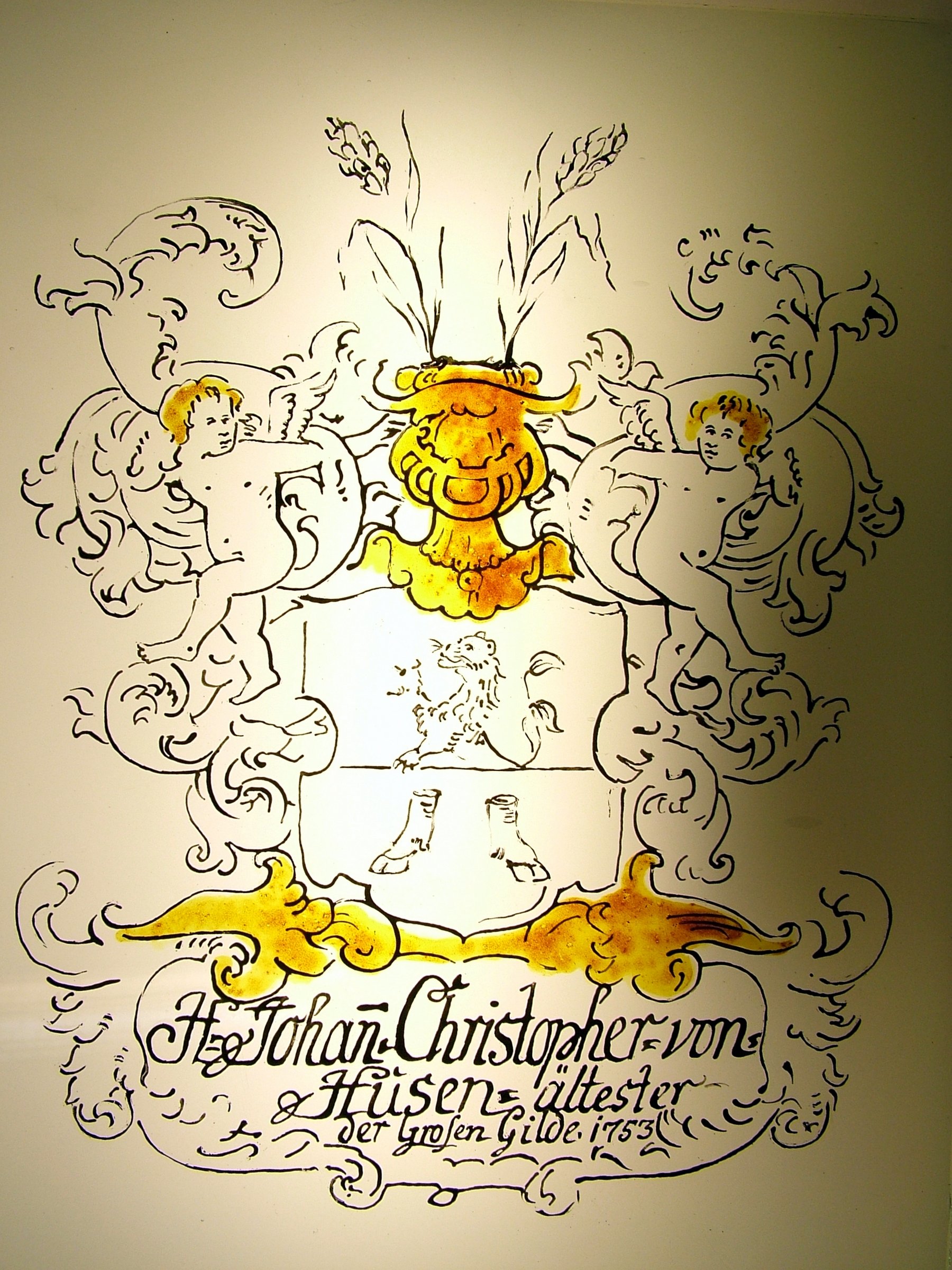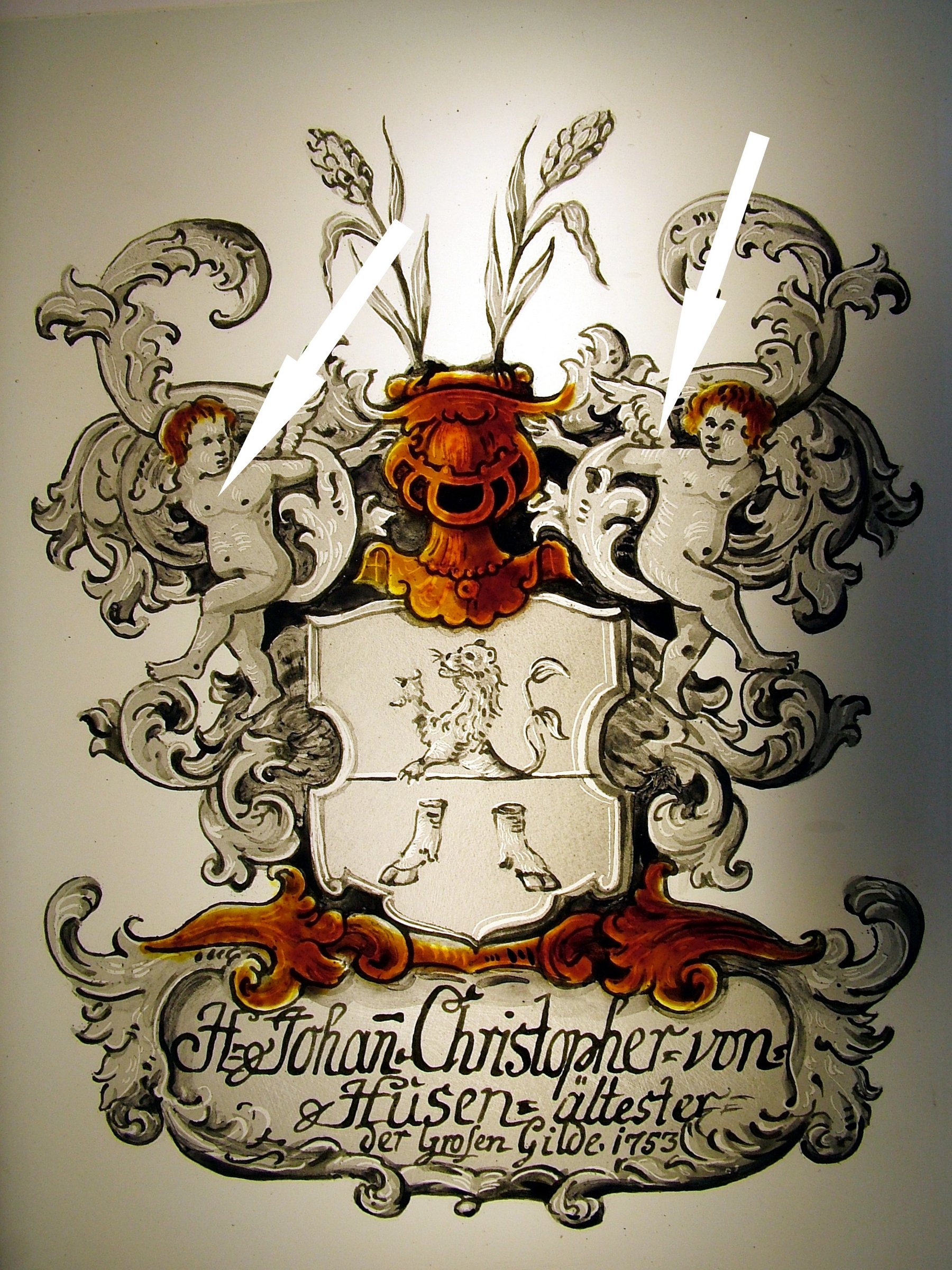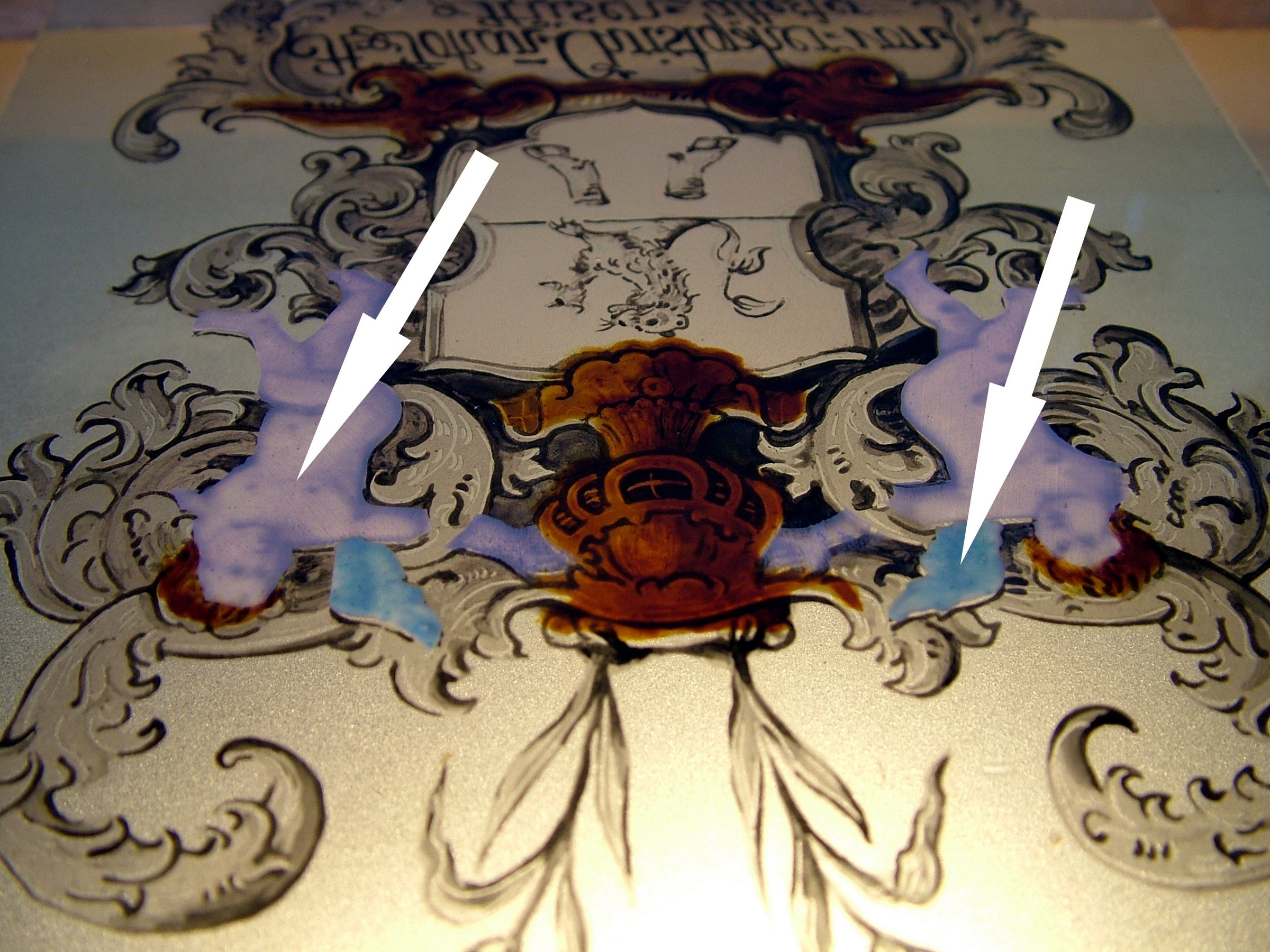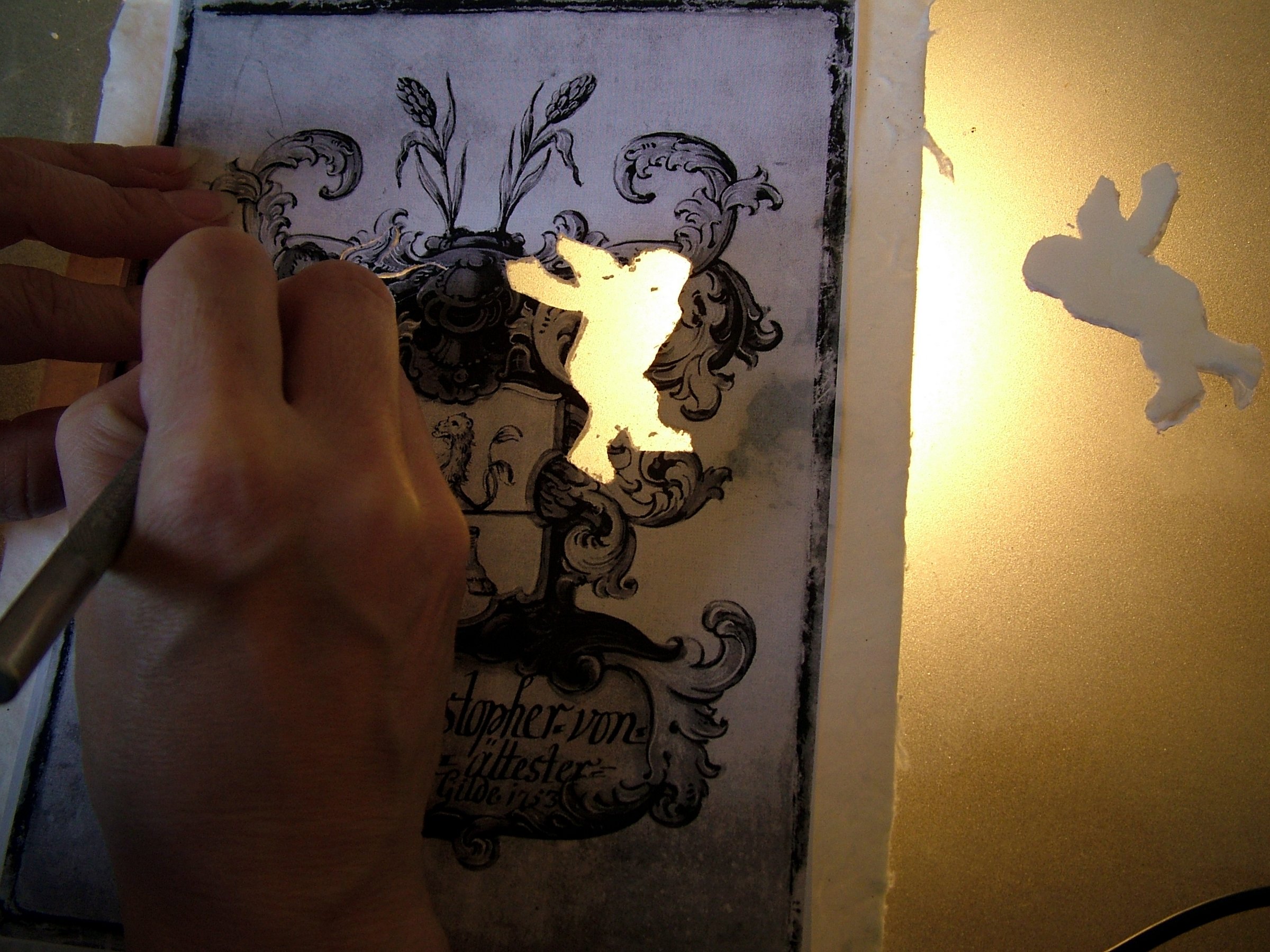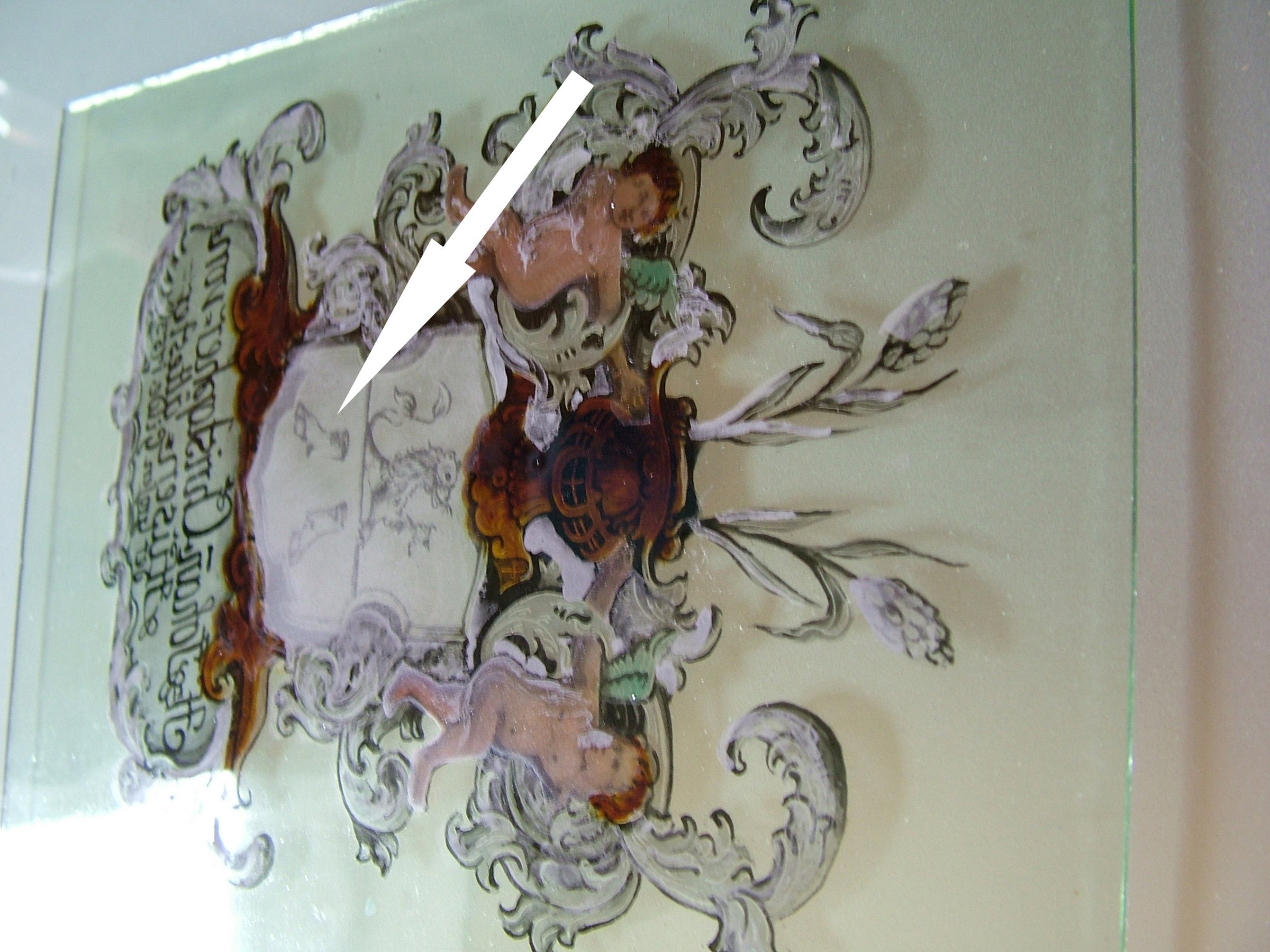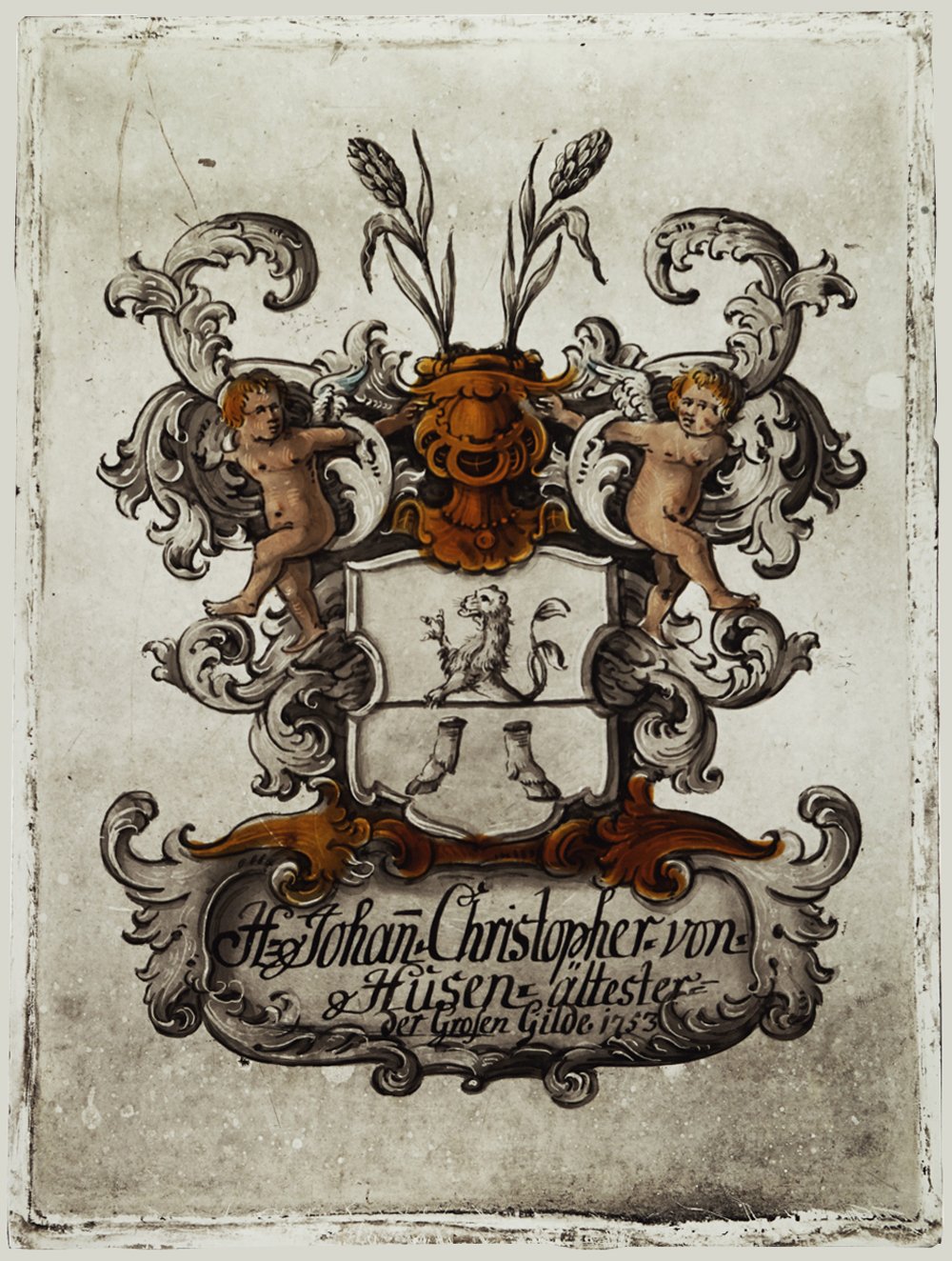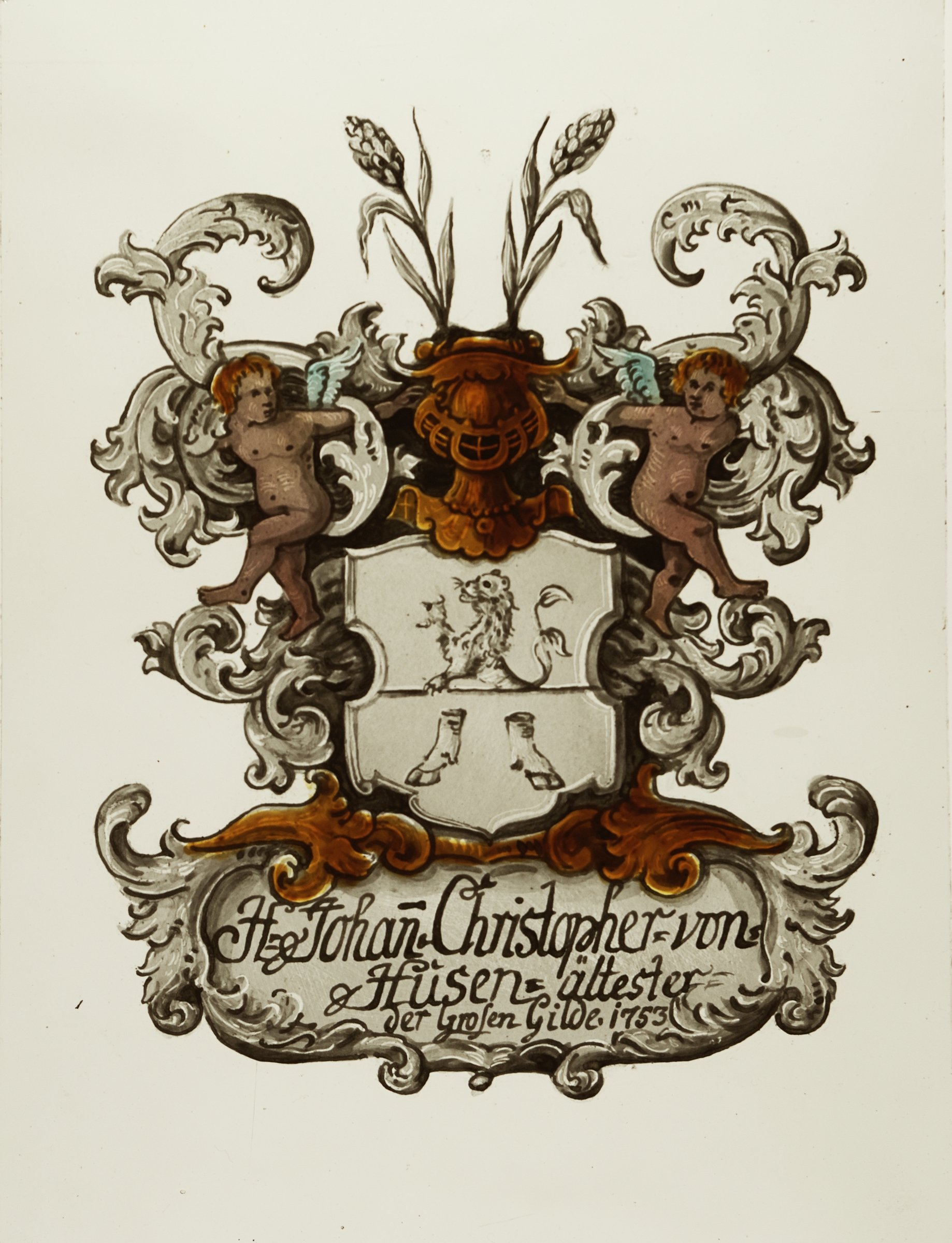THE ANALYSIS OF HISTORIC GLASS PAINTING TECHNOLOGY BASED ON THE CONSERVATION OF THE COAT OF ARMS OF THE GREAT GUILD'S ALDERMAN JOHAN CHRISTOPHER HUSEN (1753) IN TALLINN ST OLAF'S CHURCH
Autor:
Eve Koha
Year:
Anno 2015
Category:
Preservation
This article examines the coat of arms painting of the Great Guild Alderman Johan Christopher Husen (1753) located in St Olaf's Church in Tallinn. Husen's coat of arms is analysed as an example representing all ten coat of arms paintings and their details in this church. In 2012 St Olaf's Church administration together with the Tallinn Culture and Heritage Department coordinated the protection of historical glass paintings of the church. A decision to remove them from the windows was made in order to conserve the paintings. The aim was to display these rare glass paintings better in the nave niches of the church after conservation. Copies were ordered to replace the panes in their original location.
These glass paintings have been described iconographically but the technique is seldom touched upon. Only the grisaille technique, the use of different colours of paints and silver stain, as well as painting both sides of the glass, have been mentioned.
From the technical viewpoint the historical glass painting can be considered graphical or drawn. This requires very good drawing skills, excellent sense of colour, and knowledge of modelling shapes in terms of light and shadow.
In the historical paintings light is of very high significance giving the painting sensitivity and verve. The light almost always falls from the top left, north-west direction, which is of essential importance.
Modelling the shapes begins already in drawing. Lines are thinner and more delicate when exposed to light, but darker and more powerful in shadow.
The first layer is the most delicate shadow and covers the larger surfaces of the painting, where the darkness is directed from half shades towards full shades. The darkest is the area in full shade and surrounded by strong contours. A similar approach was described by Theophilus in his book Schedula diversarum artium in the 12th century.
Due to using a variety of tools and mixtures of substances, every grisaille painted layer does not need firing in the kiln separately. This is revealed in the examination of historical paintings, where the highlight has been refined through all the layers of the painting.
The glass painting firing process in the past was arduous and risky and therefore the development of glass painting techniques in the direction of lessening the number of kiln firings was understandable. The glass painting conservation and especially making a genuine copy requires a very careful glass painting technology analysis to understand the intentions of past artists.
Researching the historic background and technology in depth enables to achieve excellent results in conservation process by capturing the sense of historic glass painting instead of making mechanical copies.
MATERIALS:
KOOPIA VALMISTAMISEL KASUTATUD MATERJALID
Hõbekollane nr 9176 Degussa, Saksamaa
Must klaasivärv nr 2129 Dulevo, Venemaa
Roostepruun nr 2132 Dulevo, Venemaa
Läbipaistev rubiinvärv nr 77436 Reusche & Co, USA
Isevalmistatud vaseroheline klaasivärv CuO + fluss (SiO₂, Pb₃O₄, H₂BO₃)
Suleõli, Oy Anders Meder Ab, Soome
Kummiaraabik (gummi arabic) – naturaalne kummivaik
Keraamiline fiiberpaber - Cerama A/S, Taani
REFERENCES:
1. http://et.wikipedia.org/wiki/Oleviste_kirik (3.08.2014)
2. Simson, Sirje. Oleviste kunstiväärtused. Voldik. Tallinna Kultuuriväärtuste Amet, 2008.
3. grisaille – siin: monokroomne klaasimaal klaasivärviga, mis võimaldab luua suures ulatuses hele-tumeduse astmeid.
4. Hõbekollane – hõbedasoola (AgNO₃, AgCl või Ag2CO₃) ja täiendite segu klaasi toonimiseks difusiooni abil põletusprotsessis. Tulemusena värvub klaas helekollasest kuni pruunini.
5. Silindermeetod – aknaklaasi valmistamise meetod, kus puhutud silindervormil eemaldatakse mõlemad otsad ja seejärel avatakse vorm pikilõikega. Lõõmutuses silutakse klaasipind siledaks tahvliks.
6. Digitaalne mikroskoop Dino-Lite Premier AM4113T, tööpiirkond 25 – 55x suurendus, www.preservationequipment.com , www.dino-lite.eu.
7. Konserveerimistööd teostati SA EVM Konserveerimis ja Digiteerimiskeskuses Kanut, konsultant Heige Peets.
8. Theophilus. On Divers Arts. The Foremost Medieval Treatice on Painting, Glassmaking and Metalwork. Tõlge ladina keelest, eessõna ja märkused: John G. Hawthorne, Cyril Stanley Smith. Dover Publications, INC. New York, 1979. Lk 63–64.
9. Mägrakarvadest harjaspintsel ̶ euroopa mägra karvadest pintsel, millel on pikad tugevad ja painduvad ning kiiresti kuivavad harjased. Kasutatakse klaasimaalis ühtlase või üleminekutega maalipinna modelleerimisel.
10. Elskus, Albinas. The Art of Painting on Glass. Technique and Designs for Stained Glass. Charles Scribner’s Sons, New York, 1980. Lk 100.

